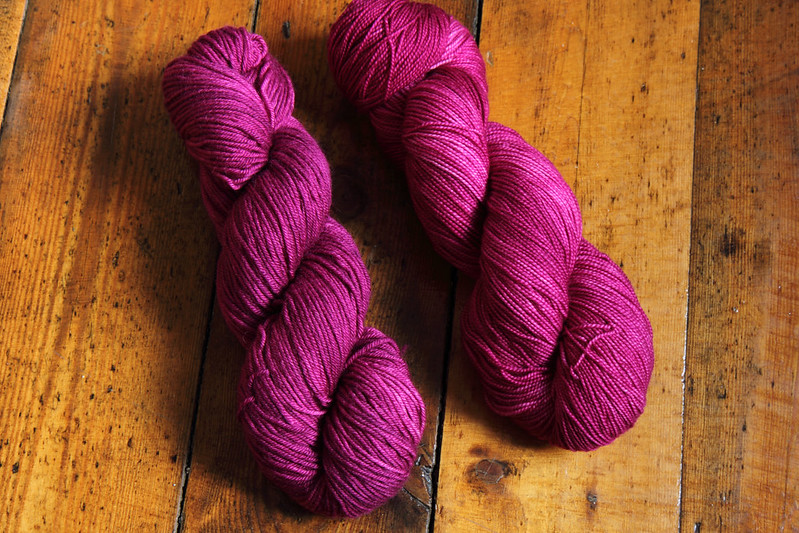We get asked a lot of questions about our yarn many of which you can find answers to below. Keep them coming! We’re always happy to hear from you.
Can you do jumper quantities of yarn (are your shades repeatable)?
Yes we can. Most shades are repeatable but sell out quickly. If you’d like more than we have available then click the “request custom order” button on the yarn page. If you don’t see a custom order link or button then unfortunately it’s probably a one-off batch or discontinued yarn or shade, but do still get in touch because we might be able to make something similar for you.
There are a number of reasons why a shade cannot be reproduced. These include: it is difficult to recreate uniformly; it can’t be dyed in large batches because requires a specific process; it was created with a different yarn or dye brand than what we use currently; it was a one-off created for our clubs; or we lost the recipe!
Can you reproduce this shade on a different yarn?
Sometimes. If the yarn is made from the same fibre blend then almost certainly, but while we can of course apply the same dye to other yarns, the results will differ a surprising mount with different fibre blend. This is in part because we use unbleached yarns, and them being different colours to start off with (silk and blends are the lightest, then alpaca, then merino, and Bluefaced Leicester being the darkest), but mostly because they absorb dye in very different ways.
The picture below shows our ‘La Vie En Rose’ shade on Dynamite DK Bluefaced Leicester (left) and Favourite Sock merino (right). The merino is brighter, the Bluefaced Leicester is deeper and slightly bluer in tone. The dye recipe and method are the same for both.
The differences between the pure wool yarns and others are much more dramatic!
Can I come to your studio?
Sorry, not at the moment. Neither our studio nor our home (where where we have our stock room) are insured for the public to visit. However, we hope to be able to offer classes and workshops at a local creative space in the near future.
One day, we also hope to turn our dysfunctional garage into a purpose built studio space where we can offer studio visits and classes.
Do you use natural dyes?
We do! But not often because we mainly use those we gather ourselves in small quantities, so you won’t find us stocking large batches or repeatable colourways of natural dyed yarn.
Here’s why:
- Just because a dye is natural, doesn’t mean it’s ethical, sustainable or non-toxic. Brazilwood has been so over-harvested it was recently made a protected species. Cochineal is made from powdered insect bodies – not something I personally feel good about, and has become a pest in areas where it was introduced to be farmed commercially. Woad (used for indigo pigment) is caustic, and is classified as an invasive weed in some areas. Of course, many natural dyes are ethical (see our Dyeing with Onion Skins tutorial). We are looking at ways we can grow some of them so we can be sure they are ethically produced.
- The natural dyeing process is not free of chemicals. The majority of natural dyes require a mordant – a chemical salt that prepares the yarn to be able to absorb the dye (though chemists disagree about the actual chemical process) and in some cases to modify the colour. The most inoffensive mordant is potassium aluminium sulphate, known as ‘alum’ (see our tutorial for more info about mordanting with alum). Another popular mordant is copper sulphate, which is an irritant and environmentally toxic.
- Natural dyes are not normally completely wash or light fast, so not necessarily practical for knitwear. To us, sustainability includes the life of the garment.
- A limited range of colours and colour effects can be created using natural dyes (no speckles!).
The synthetic dyes we use are from a family known as ‘reactive dyes’, they form strong, wash and light fast bonds with the fibres and don’t produce harmful byproducts or require problematic auxiliary chemicals. More about our dyeing process.
